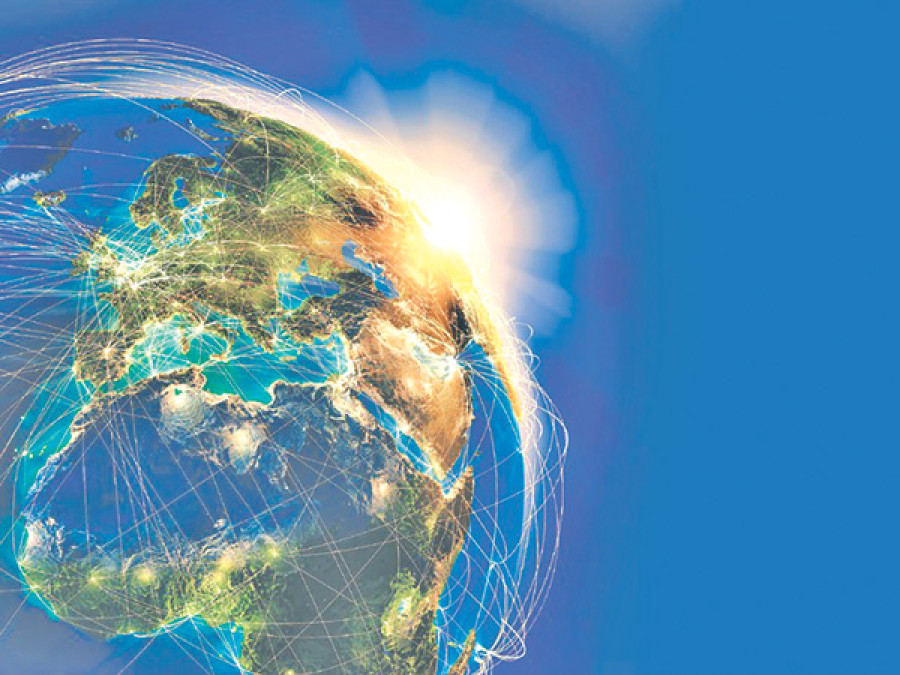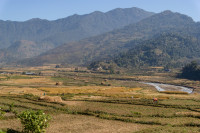Opinion
Trade is the way
Emerging and developing economies have proved that commerce is vital for progress
Gauri Pradhan
Trade is one of the key components of development. The Silk Road, which connected Europe and China, is a great example of commerce in ancient times. Trade also generates employment opportunities and provides access to markets for people and sustainable livelihood opportunities. Many developed countries have made outstanding progress in their economies through international trade. However, many countries still lag behind and remain poor, vulnerable and least developed due to an unfavourable balance of trade. Other reasons are lack of appropriate domestic policies, absence of bold and dynamic national leadership and weak productive capacity. Unfair trade relations between the rich and poor countries, lack of fulfilment of pledges of the developed countries on official development assistance (ODA) and Aid for Trade are equally responsible for the plight of the least developed countries (LDCs) and countries with special needs.
There has been increasing dialogue at the international level to strengthen trade to reduce poverty, increase employment and boost productivity. UNCTAD XIV, which is scheduled to be held in Nairobi, Kenya from July 17-23, is another such important global platform. In order to address the issues and concerns of international trade, the United Nations Conference on Trade and Development (UNCTAD) and its development partners including civil society have been working together to achieve internationally agreed goals (IAGDs). The concept of economic interdependence, Global System of Trade Preferences among Developing Countries (GSTP), South-South Cooperation, G-77, foreign direct investment (FDI) and development-oriented international financial architecture are some examples of the landmark development agenda in this regard.
A world without LDCs
The Report of the Secretary-General of UNCTAD to UNCTAD XIV: From Decisions to Actions highlights four action lines required to properly address the ambitious 2030 Development Agenda. They are: Building the productive capacity to transform economies; more effective states and more efficient markets; tackling vulnerabilities and building resilience; and strengthening multilateralism and finding common solutions.
Emerging and developing economies like China, Brazil, India and South Africa have proved that the international trade they have been conducting in recent decades has contributed much to their economic progress. Other developing countries like Kenya, Sri Lanka, Jordan and Malaysia are also gradually improving their economies through international trade. In the case of the LDCs, “there has been some improvement in market access for LDC products and their exports have gradually increased,” according to the outcome documents of the Midterm Review of the Istanbul Programme of Action (IPoA). However, “the share of LDCs exports remained highly concentrated in a few primary products.”
Most LDCs are in a challenging situation with special needs. They are hindered not only by low incomes but also weak human assets and economic and climate vulnerabilities. Increasing political instability, armed struggle, unemployment and natural and economic shocks have created adverse effects on building productivity and capacity to excel in international trade. Technology gaps and science, technology and innovation (STI) weaknesses have made their situation more miserable. Lack of structural transformation and diversified economies has made it difficult for the LDCs to meet the goals as set in the IPoA. Besides, unregulated foreign direct investment (FDI) without proper national policies and ownership has made their development fragile. Exploitation of natural resources has not only damaged the environment but also put the lives of people at risk.
The global policy on trade has provided opportunities and space to the developing countries, especially the LDCs and countries with special needs. LDCs have duty-free and quota-free access to international markets to export everything except arms and artillery. They also get preferential treatment such as: World Trade Organisation(WTO) provisions providing special and differential treatment; autonomous, non-reciprocal initiatives through the Generalised System of Preferences (GSP) schemes of various countries; and preferential market access under various regional trade agreements and bilateral trade agreements. But most LDCs have not been able to maximise these opportunities due to various factors including lack of proper policies and decisions and inability to benefit from emerging global market opportunities. The developed countries are also equally responsible for not fulfilling their ODA commitments, Aid for Trade and technology transfer as per international agreements.
LDCs and countries with special needs are regarded as the most vulnerable and poverty stricken places in the world. On the one hand, the world is preparing to reduce the number of LDCs by half by 2020; and on the other hand, only four countries in this category have been able to come out of this status and the number of LDCs has doubled since 1971. It has been decades since the dream of a world without LDCs was announced. However, our efforts and resources invested towards this direction could not produce the desired impact at the ground level. Instead, the gap between rich and poor individuals, groups and countries has widened on a bigger scale.
Leaving no one behind
In order to change the gloomy picture of the LDCs, the world sincerely needs to focus on their sustainable development through effective translation of the IPoA into action. There should be synergy and coherence of the IPoA with Sustainable Development Goals 2030 and other IADGs including the Paris Agreement on Climate Change, Addis Ababa Action Agenda (AAAA) and Sendai Framework for Disaster Risk Reduction. Without doing so and respecting the trade related multilateral agreements including the Agreement on Trade-Related Aspects of Intellectual Property Rights (TRIPS), the world is not going to achieve the declared goals of the 2030 development agenda.
Aid for Trade from the developed countries to their LDC counterparts can help build basic infrastructure such as energy, transportation and communication networks to allow them to expand their trade in the national, regional and international markets. Technical assistance and transfer to LDCs, low-income landlocked developing countries (LLDCs) and Small Island Developing States (SIDS) can contribute to building their productive capacity and competence for international trade. All the developed and emerging developing countries should provide duty-free and quota-free access to the products of LDCs and countries with special needs. Besides, employment generation and support to local trade can also be enhanced by promoting tourism development. For this, LDCs also need to build and strengthen their capacity and diversify their export base for promoting economic integration.
Let’s hope that UNCTAD will take a robust position on what has already been decided for the rights, justice and development of the LDCs. UNCTAD XIV will be another opportunity for the developing countries, especially the LDCs and low-income LLDCs and SIDS to negotiate with the developed world to fulfil their global commitments to ODA, Aid for Trade, technology transfer at affordable prices and duty-free and quota-free access. ‘Special and differential treatment’ provisions in multilateral WTO agreements, which are already mandatory, should be duly respected by the developed countries if they are really committed to sustainable development and structural transformation of the LDCs and countries with special needs. Fair trade between the developed and developing countries, particularly the LDCs, needs to be established and strengthened as millions of people deserve it. Otherwise, the global call of the 2030 agenda of ‘Leaving No One Behind’ will be a distant dream.
Pradhan is a former member of the National Human Rights Commission and international coordinator of LDC Watch




 7.12°C Kathmandu
7.12°C Kathmandu










